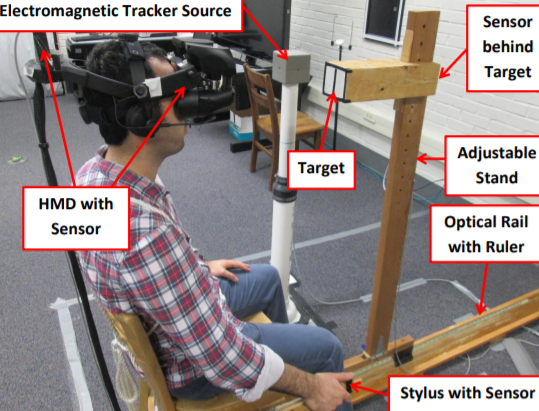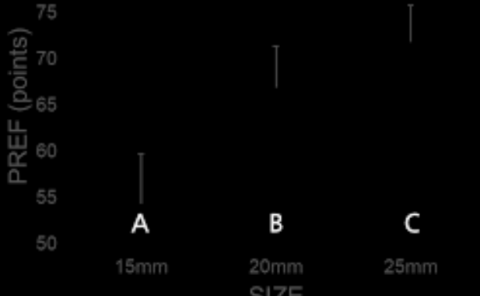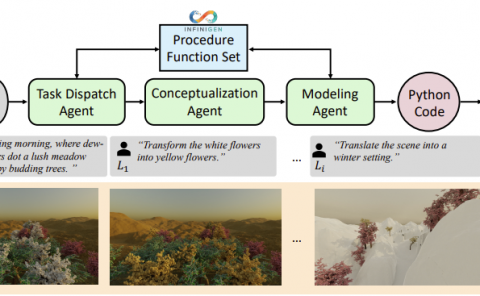Effects of visual and proprioceptive information in visuo-motor calibration during a closed-loop physical reach task in immersive virtual environments
PubDate: August 2014
Teams: Clemson University
Writers: Elham Ebrahimi;Bliss Altenhoff;Leah Hartman;J. Adam Jones;Sabarish V. Babu;Christopher C. Pagano;Timothy A. Davis

Abstract
Research in visuo-motor coupling has shown that the matching of visual and proprioceptive information is important for calibrating movement. Many state-of-the art virtual reality (VR) systems, commonly known as immersive virtual environments (IVE), are created for training users in tasks that require accurate manual dexterity. Unfortunately, these systems can suffer from technical limitations that may force de-coupling of visual and proprioceptive information due to interference, latency, and tracking error. We present an empirical evaluation of how visually distorted movements affects users’ reach to near field targets using a closed-loop physical reach task in an IVE. We specifically examined the recalibration of movements when the visually reached distance is scaled differently than the physically reached distance. Subjects were randomly assigned to one of three visual feedback conditions during which they reached to target while holding a tracked stylus: i) Condition 1 (-20% gain condition) in which the visual stylus appeared at 80% of the distance of the physical stylus, ii) Condition 2 (0% or no gain condition) in which the visual stylus was co-located with the physical stylus, and iii) Condition 3 (+20% gain condition) in which the visual stylus appeared at 120% of the distance of the physical stylus. In all conditions, there is evidence of visuo-motor calibration in that users’ accuracy in physically reaching to the target locations improved over trials. During closed-loop physical reach responses, participants generally tended to physically reach farther in condition 1 and closer in condition 3 to the perceived location of the targets, as compared to condition 2 in which participants’ physical reach was more accurate to the perceived location of the target.


